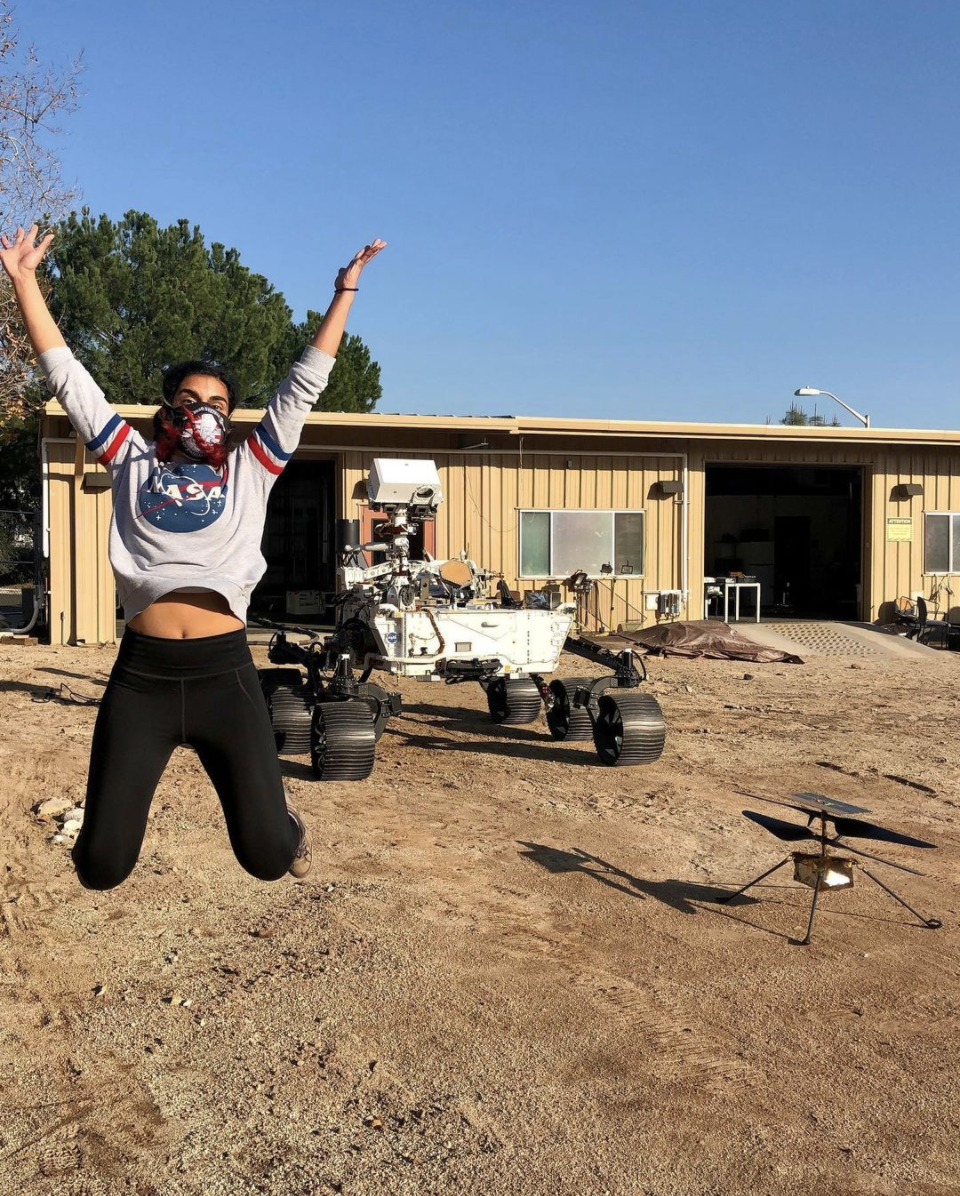NASA is set to make history on Mars again in a few weeks, and a Canadian engineer is playing a crucial role.

The helicopter “Ingenuity” will attempt a short flight in early April, becoming the first human-made device to fly on another planet. It’s being called NASA’s “Wright Brothers moment,” in reference to the first flight over Kitty Hawk, N.C., in 1903.
“I mean, we’re flying on another planet. Come on!” says systems engineer Farah Alibay. “And you know, it’s kind of crazy because we’ve only been flying on Earth for about 100 years. And now we’re saying we’re going to go to another planet where gravity is different.”
Alibay was part of the team that helped develop the helicopter at Nasa’s Jet Propulsion Lab. Ingenuity had to be designed to operate in an atmosphere that is 99 per cent thinner than that found on earth. It also had to be outfitted with solar panels so it could heat itself during Mars’ -90 C nights.
The first flight will be roughly 90 seconds long as Ingenuity hovers three metres above the ground. Future flights will see the helicopter travel short distances.
“You don’t learn to run first, you walk first or crawl,” Alibay says.

The team overseeing the flight is large so no one person will get the credit for conducting the first flight on another planet. Alibay joined NASA after growing up in Montreal and attending high school and university in England.

Get breaking National news
“I think the best description is meandering for my path,” she says.
“Eventually, I made it, and I made it where I wanted to be, mostly because this was my dream. And so every time someone told me no, every time I failed, I was like, well, let me just try again, see if someone else will let me.”
Her grandparents immigrated to Montreal after fleeing a civil war in their native Madagascar. She says it was difficult growing up as a minority in Quebec, and when the family moved to England for high school, she had to adapt to learning in English for the first time.
After attending prestigious Cambridge University, she applied to NASA — and was promptly rejected.
“It’s not like the first NASA internship I put in that they accepted,” she says. “I probably had like 50 of them rejected. And one day, someone … at a dinner, at a conference, took interest in my research and offered me an internship.”
Perhaps her biggest hurdle was getting over the fact that few people who looked like her worked at NASA.
“I grew up in the ’90s so there was a lot of interest in space, but a lot of people in these positions were white men,” she says.
“It took a while for me to even allow myself to dream that I could be part of these people. So to me, it’s really important, now that I’m here, to show girls, to show minorities, that, hey, it doesn’t matter what you look like,” she says. “There’s a place for you here.”





Comments